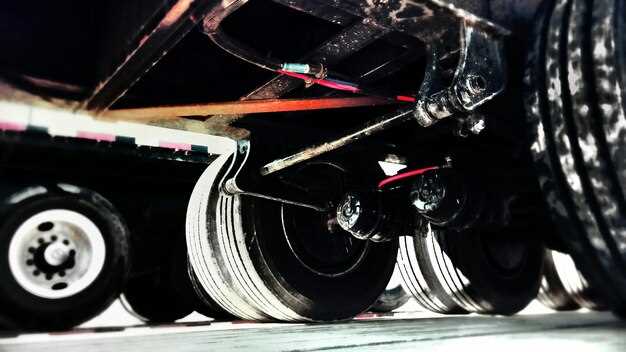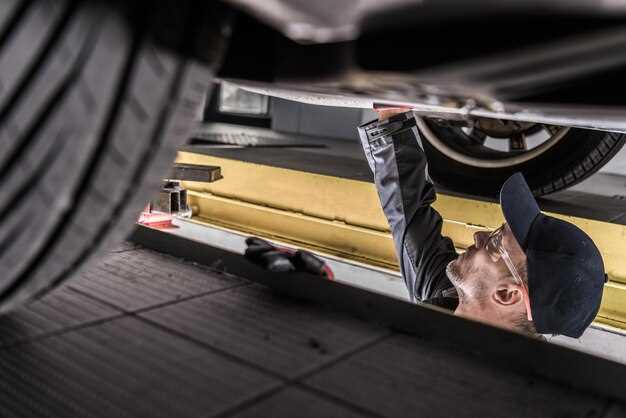
In the world of motorsport, tuning a car’s chassis is crucial for achieving optimal performance on the track. The way a vehicle’s setup is engineered directly influences its handling, stability, and overall speed. For track enthusiasts and professional drivers alike, understanding the nuances of chassis tuning can mean the difference between victory and defeat.
Track cars are designed for one primary goal: to excel on closed circuits. To unlock their full potential, it is essential to delve into techniques that focus on suspension geometry, weight distribution, and tire dynamics. Each element of setup plays a pivotal role in how the car responds to driver inputs and the race conditions.
Mastering chassis tuning requires a comprehensive grasp of various adjustments, from ride height and camber angles to shock absorber settings. By optimizing these factors, racers can enhance grip, cornering performance, and overall lap times, making the pursuit of tuning an ongoing journey towards perfection on the track.
Understanding Suspension Geometry for Improved Cornering
The suspension geometry of a chassis plays a critical role in the handling characteristics of track cars, directly impacting cornering performance. A well-tuned setup can enhance vehicle stability and responsiveness, allowing drivers to navigate turns with precision. Key elements of suspension geometry include camber, caster, and toe angles, each contributing uniquely to the dynamics of cornering.
Camber is the angle at which the wheels tilt in relation to the vertical axis. Negative camber helps maximize tire contact with the track surface during cornering, which increases grip and reduces the likelihood of understeer. Proper adjustments to camber settings can improve cornering performance by optimizing tire wear and enhancing lateral grip.
Caster angle affects the steering axis tilt, influencing how the car handles during turns. A positive caster angle increases straight-line stability while providing better feedback through the steering wheel during cornering. Adjusting the caster can help achieve a more responsive chassis setup, enabling quick transitions between corners.
Toe angle refers to the angle at which the tires point in or out relative to the chassis. Precise toe adjustments can enhance cornering agility by ensuring tires generate optimal grip throughout the turning process. A slight amount of toe-in can improve stability during cornering, while toe-out may enhance responsiveness but could sacrifice straight-line stability.
Moreover, the overall geometry of the suspension system must be considered in conjunction with roll centers and weight distribution. A well-designed suspension will minimize body roll, allowing the tires to maintain better contact with the road surface, thus improving cornering performance. The interaction between suspension geometry and chassis characteristics determines how effectively a track car can navigate curves.
In conclusion, understanding and optimizing suspension geometry is essential for achieving an effective chassis setup on the track. By fine-tuning camber, caster, and toe angles, as well as considering the entire suspension system’s design, drivers can significantly enhance cornering capability, leading to faster lap times and improved overall performance.
Fine-Tuning Tire Pressure and Compound Selection

Achieving optimal performance on the track requires meticulous attention to tire pressure and compound selection. These two factors significantly influence the overall setup of a track car, affecting grip, handling, and tire wear.
Tire pressure plays a critical role in maximizing contact patch and enhancing responsiveness. Lower pressures can increase the contact area, providing more grip, especially in corners. However, excessively low pressures may lead to instability and increased tire wear. Conversely, higher pressures can improve straight-line speed and reduce rolling resistance but may compromise traction and create a harsh ride. It is essential to conduct thorough testing to find the ideal balance for your specific track conditions and driving style.
In addition to pressure, selecting the right tire compound is crucial for effective tuning. Different compounds offer varied levels of grip, wear characteristics, and heat tolerance. Softer compounds provide excellent grip but may wear out quickly, while harder compounds tend to last longer but offer less traction. Understanding the track surface and temperature is vital, as certain compounds perform better under specific conditions. For example, on a hot day, a softer compound may overheat, leading to decreased performance, while a harder compound may be slower to warm up.
Combining the appropriate tire pressure with the right compound enhances overall grip and handling, allowing for precise cornering and improved lap times. Data logging and tire temperature monitoring can guide you in making informed adjustments, enabling continuous optimization of your track car’s setup. Ultimately, fine-tuning these elements is a key aspect of chassis tuning that can make a significant difference on the track.
Adjusting Weight Distribution for Enhanced Stability

Weight distribution plays a crucial role in chassis tuning, significantly affecting the handling and stability of track cars. By optimizing how weight is distributed across the front and rear axles, drivers can experience improved cornering performance and enhanced traction. Uneven weight distribution can lead to oversteer or understeer, making fine-tuning essential for achieving the best possible track performance.
Front-Heavy vs. Rear-Heavy Setup
A front-heavy chassis may provide better initial turn-in response but can lead to understeer as cornering forces increase. Conversely, a rear-heavy setup can facilitate lively rear-end behavior, but may compromise straight-line stability. Striking the right balance between the front and rear weight distribution is pivotal for maximum cornering capability and speed on the track.
Techniques for Adjusting Weight Distribution
One effective method for achieving ideal weight distribution is through repositioning components such as the battery, fuel tank, and even the driver’s seating position. Moving these heavy items can help shift weight forward or backward, allowing for better balance. Additionally, suspension tuning, including ride height adjustments, can influence how weight is transferred during cornering, further refining chassis dynamics.
Testing and Data Analysis
To quantify the effects of weight distribution adjustments, track testing and data analysis are essential. Utilizing tools such as corner weight scales helps achieve precise measurements of each wheel’s load. This data can guide further adjustments, allowing for an iterative approach to chassis tuning. Track sessions should be recorded to assess changes in handling characteristics, ensuring that any modifications lead to the desired outcome.
By diligently adjusting weight distribution, drivers can unlock enhanced stability, confidence, and responsiveness in their track cars, ultimately leading to faster lap times and a more rewarding driving experience.



